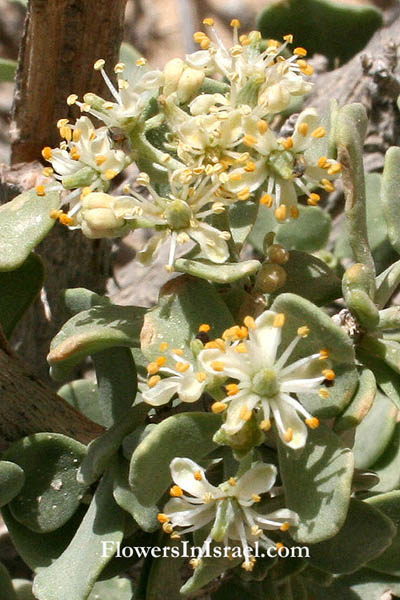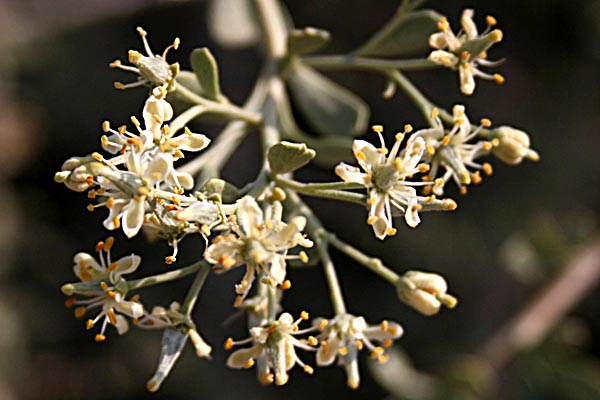Hebrew: ימלוח פגום, Arabic:غرقد كليل
| Scientific name: | Nitraria retusa (Forssk.) Ascherson | |
| Synonym name: | Nitraria tridentata Desf. | |
| Common name: | Salt tree, Nitre bush | |
| Hebrew name: | ימלוח פגום | |
| Arabic name: | غرقد كليل "Gharqad/Ghardaq" | |
| Family: | Zygophyllaceae, זוגניים |

|
| Life form: | Phanerophyte shrub | |
| Spinescence: | Stems | |
| Succulence: | Leaf succulent | |
| Stems: | Up to 2m high; young shoots whitish pubescent, spiny at the apices | |
| Leaves: | Alternate, entire, dentate or serrate | |
| Inflorescence: | A scorpioid cyme | |
| Flowers: | Pedicellate, c. 4-5 mm in diameter, White, fragrant | |
| Fruits / pods: | Drupe hemispherical | |
| Flowering Period: | April, May | |
| Habitat: | Salty habitats | |
| Distribution: | Semi-steppe shrublands, Shrub-steppes, Deserts and extreme deserts | |
| Chorotype: | Saharo-Arabian | |
| Summer shedding: | Perennating |

Derivation of the botanical name: Nitraria, Latin nitrum, i "natron, native soda," Greek nitron, soda sources, the plant was first found on the saline plains in Siberia retusa, with a rounded, slightly notched tip. tridentata , three-toothed. The Hebrew name: ימלוח, yamluack, nitraria, from מלח, melakh (= to salt).
|